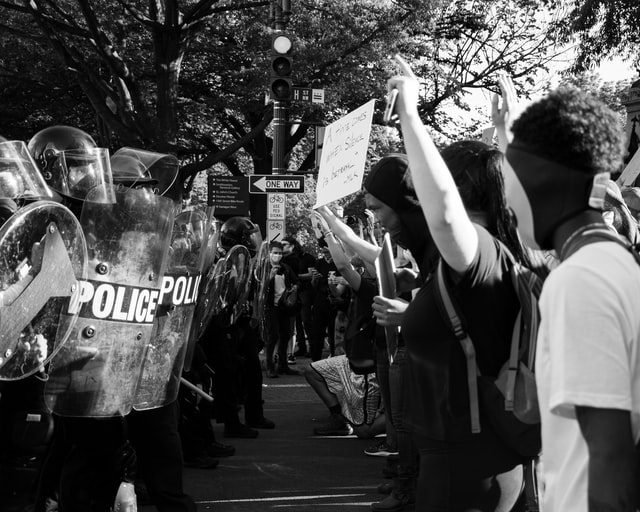Criminal justice reform remains an urgent need. Both groups need each other in order to accomplish it.

Criminal justice reform efforts in the U.S.- looking so promising with the passing of the FIRST STEP Act in 2018- have stalled in the wake of rising crime and a strange new progressive obsession with, “Defunding the Police.”
As attractive as a utopian police-free society may seem, when most people imagine it, they picture a peaceful place that doesn’t ever need police and therefore doesn’t have them. A society that needs police and doesn’t have them isn’t called a utopia; on the contrary.
Nevertheless, despite the recent ill-fated jaunt down the dystopian road of defunding the police, there is still much work to be done on criminal justice reform in America.
There isn’t any reason that police officers and their would-be defunders can’t work together; in fact, criminal justice reform would happen a lot sooner, and at all, plus be more successful if the two groups could find common ground.
Plenty of low-hanging fruit on the criminal justice reform tree, no reason to start with ending qualified immunity or defunding police departments. Ending no-knock warrants has bipartisan support in Washington. That would save lives- citizen and officer. For profit prisons could go, too. Traffic laws might be better enforced via traffic cam. Ending civil asset forfeiture would be an excellent place to start.
But first, the two groups- both of which reliably voted Democrat until five minutes ago- need to come to some sort of understanding about the realities of policing in America.
First off, Defund activists can take a victory lap; at the heart of their argument, they are correct in one major point:
Police Officers Aren’t in as Much Danger From the Public as they Think They Are.
During the course of their training and onboarding, police cadets and new officers are shown, and watch on their own, endless videos of police officers being violently, suddenly, and tragically killed in the line of duty.
This being the Information Age, as beautiful as it is terrible, and body cams being an increasingly common part of the police uniform, plus surveillance cameras everywhere; there is no shortage of these videos.
There are more of these videos available now- “for training purposes”- than ever before in history.
There is training- which considers more than just the visceral impact of these snuff films- then there is glorifying violence. There is a fine line between the two. Which is calling attention to the injustice and which is perpetuating it? One incident- even a hundred, no matter how violent- doesn’t tell the whole story.
Police officers and their trainers need to understand, and impress on new recruits and each other- more often than they do- that most interactions with the public do not end in the death of anyone. New and veteran officers should obey their training, follow all safety precautions and protect themselves at all times…while bearing in mind the statistically small nature of the chance they will be killed on duty.
But Defund activists can’t get off too easily. On an equally important point, they are dead wrong and the police officers are absolutely right:
The Public Isn’t in as Much Danger From Police Officers as They Think They Are.
“Defund” advocates need to internalize that the opposite is just as true; most people aren’t any more likely to be killed by a police officer than they are to be eaten by a shark.
Police officers, nationwide, have hundreds of millions of interactions with the public every year; the vast majority of these do not end in the death of an unarmed suspect deprived of his right to a fair trial.
Police kill about 1,000 people a year, every year. A small percentage of that group is unarmed. Depriving someone of their right to a fair trial- acting as judge, jury, and executioner- is completely unacceptable. Getting the number of unarmed suspects down to vanishingly small, and the number of armed suspects actively engaged in attempted homicide with a deadly weapon down far lower than it is, is a good place to focus.
Reducing the number of officers killed in the line of duty would help reduce the violence. One easy way to do this would be to end traffic stops.
The advent of traffic cams has made traffic stops near obsolete. Cops should still patrol looking for more serious crimes and cars being operated in a dangerous manner, but most traffic infractions from a broken tail light to speeding should be handled via traffic cam and the mail.
Uniformed patrol officers are often the least experienced members of the force. Inexperienced traffic cops just out of the police academy should not be expected to routinely rise to the occasion of a major drug bust and/or shoot-out with members of an organized crime operation because of a broken tail light.
Special investigative units and detectives should handle things like armed-robbery suspects who have skipped bail and have active warrants, or known drug operations, etc.
Defunding the police was never going to happen, and it probably shouldn’t. As a society, we can’t dispense with police until officers and detectives charged with investigating and deterring violent crime are sitting around their station houses with nothing to do.
Until that halcyon day comes, criminal justice reform activists and police departments nationwide have a great deal of important work to do.
To have any hope of accomplishing it, they’ll need to work together.
(contributing writer, Brooke Bell)